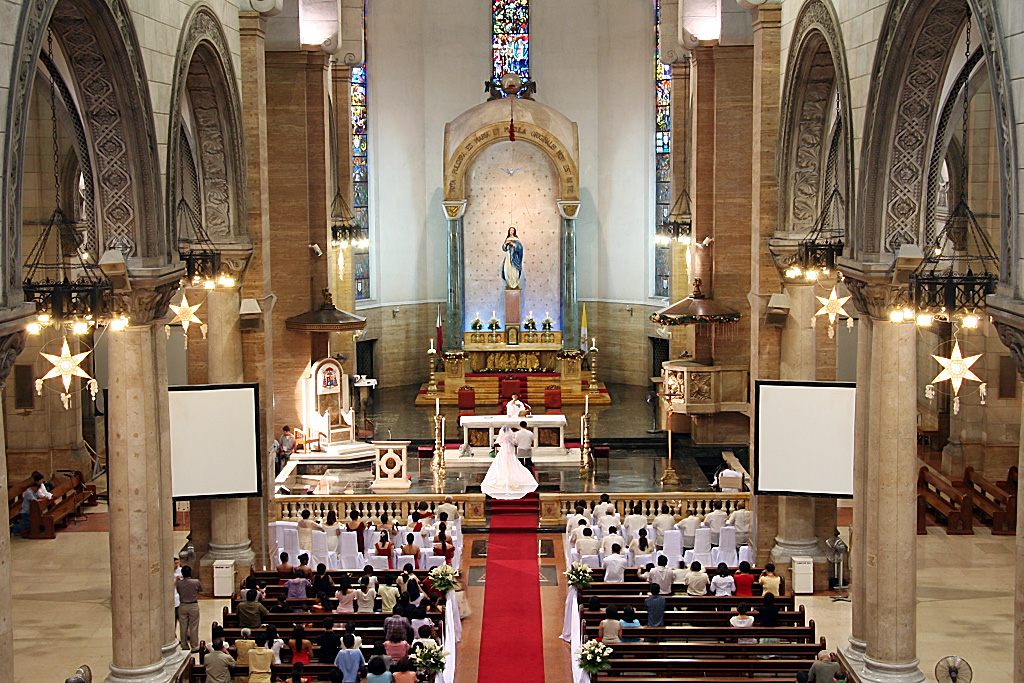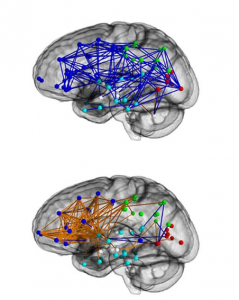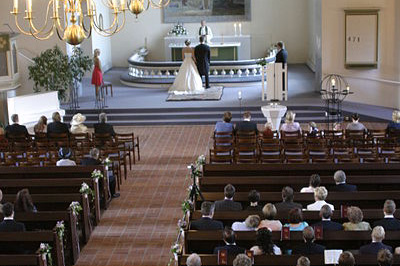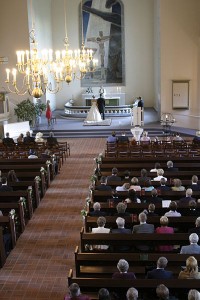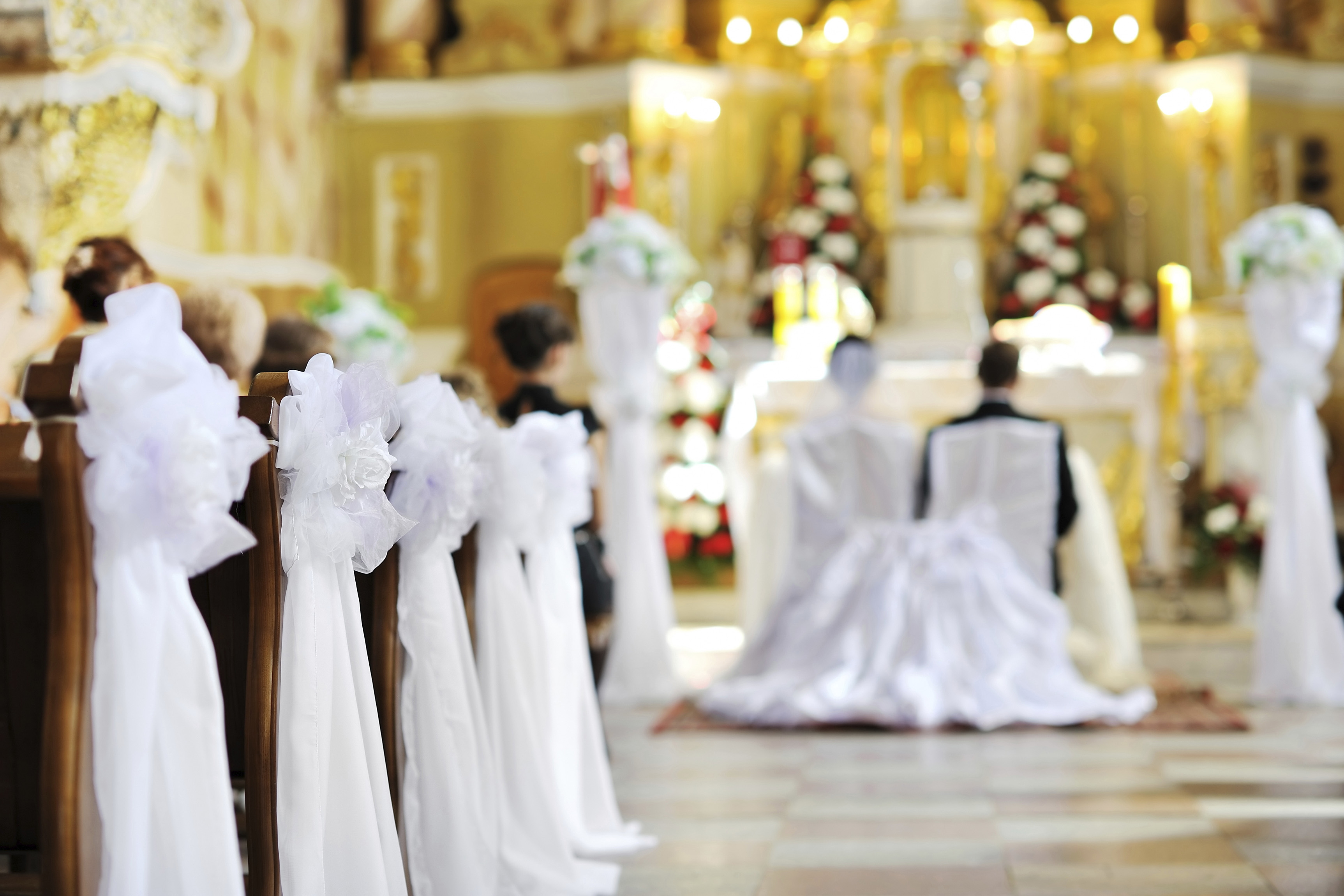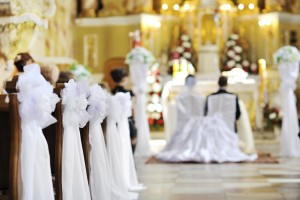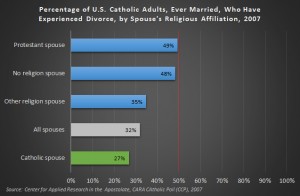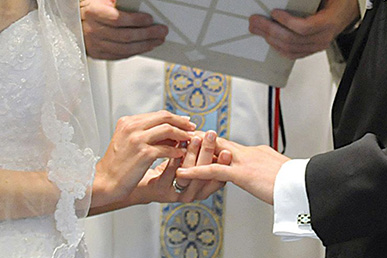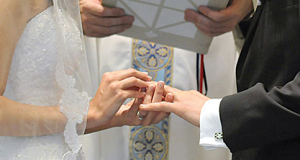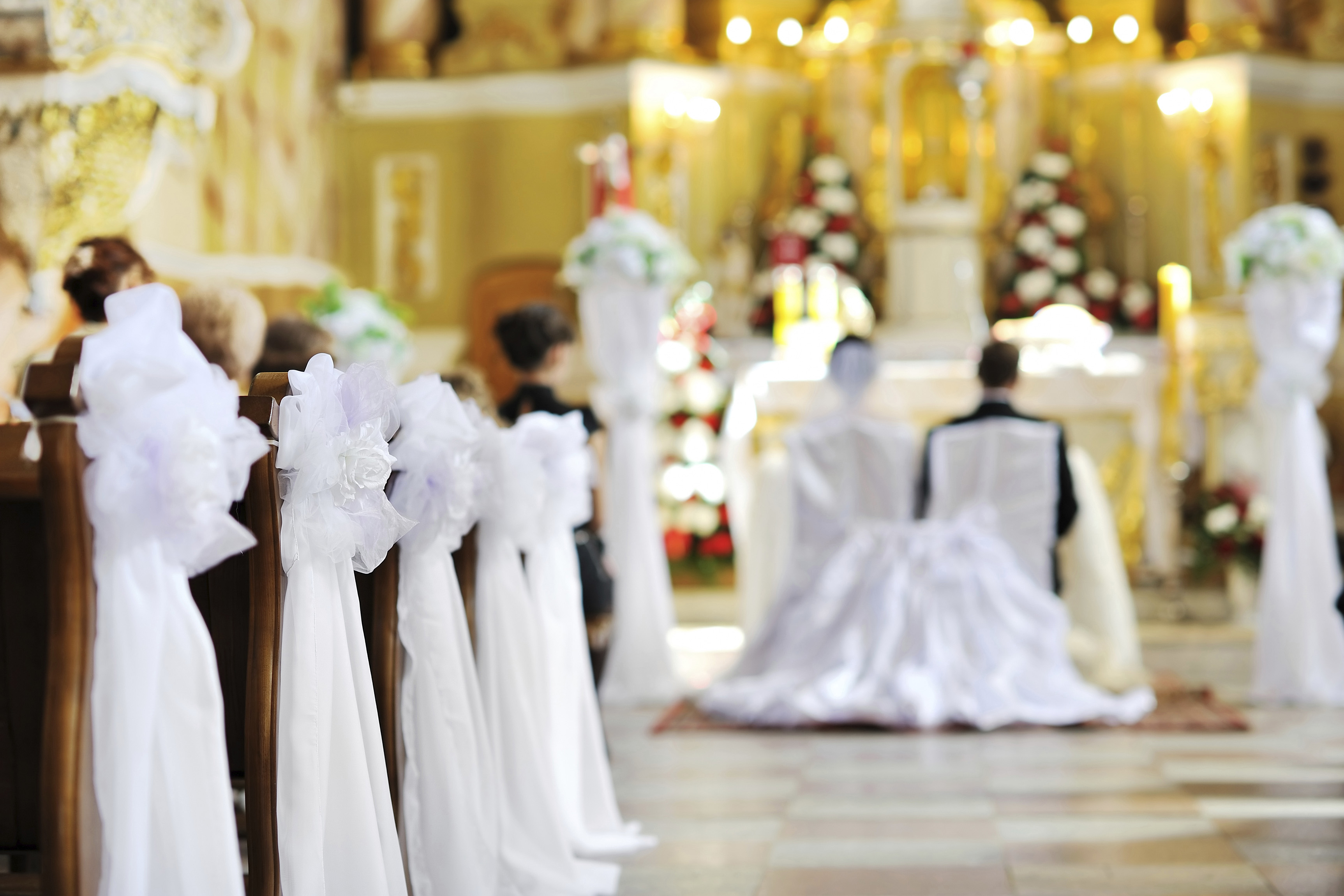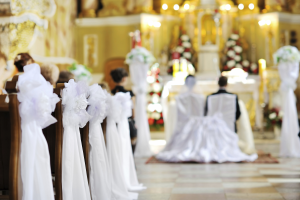
We’ve talked a good deal about the decline of marriage on this blog over the years. And our discussion must continue as the Synod on the family is planned in Rome.
In my short 25 years as a priest I have experienced a major drop off in marriages. In my early years, I had about thirty weddings a year; now, about five or six. In this urban parish in which I have ministered for the larger part of 20 years, a beautiful and picturesque setting for a matrimonial sacrament, we used to have to turn couples away who were not members. Some Saturdays featured two weddings back to back. Beginning in 2000, weddings plummeted.
And lest you think this just unique to me in my urban parish, note that in 1973 there just over 400,000 weddings in Catholic parishes in this country. In 2003, there were 199,645, more that a 50% drop in thirty years. Last year, 2012, there 166,991 weddings in the Church. Compare that to the 419,278 funerals and you have a pretty good picture of a Church and a culture that are in real trouble and of the Sacrament of Holy Matrimony that is “dying.” Thus my anecdotal experience matches the national trends and numbers.
Recently Mona Charen offered some thoughtful reflections on Marriage in National Review. I would like to offer her comments along with some of my own. Note that I am excerpting her article, the full version of which is here: The Marriage Divide. In that article she speaks of the sources of some of her statistics and offers context that these excerpts may not include. Hence I recommend the full article as well. As usual, her comments are in Black, bold, italics. My remarks are in plain red text.
Marriage is decaying very fast. As recently as the 1980s, …only 13 percent of the children of moderately educated mothers…were born outside of marriage. Today, it is 44 percent. Even more disturbing are the recent data showing that 53 percent of babies born to women under age 30 are non-marital.
I will only add that these sorts of number are simply shocking, not just for their real impact but also for how swiftly this revolution has come upon us. One struggles not to see outright demonic along with the usual human sinfulness that produces cultural ailments.
If you graduate from college, you are likely to choose a family life similar to, if not quite identical to, the 1950s ideal. (I suspect eve this is beginning to change for the worse). If you are a high-school dropout, you are unlikely to marry at all. If you have a high-school diploma or some college, your family life in many cases is going to be chaotic, featuring cohabitation, short marriages, and high rates of instability….cohabiting couples have a much higher breakup rate than do married couples, a lower level of household income, and a higher level of child abuse and domestic violence. (She speaks to some of the sources of these sober trends in her article).
[C]ohabitation is a very bad deal for all concerned — especially women and children. The children of cohabiting couples do worse than those living with a single mother if the boyfriend is not the biological father of the children. The break-up rate among unmarried cohabiting couples is much higher than among married couples, with all that that entails for disruption, poverty, and pathology.
And again, it is the children who pay most and first for all this adult misbehavior. But the damage does not stop there, as can be seen.
I would also like to say that regarding the cohabitation problem, there are two levels to the problem: the young who do it, and the parents and grandparents who actively or passively approve of it. Once upon a time, even in my short 52 years, this behavior was not only frowned upon, it was punished at both the family and cultural level. Folk who “shacked up” received significant pressure: financial, social, familial and cultural, to stop “living in sin.”
The sexual revolution, with a thinking strongly tied in with a lot of hallucinogenic drugs, sold us a bill of goods that it was really “better” for a couple to “take a test ride” before tying the knot. For at least two decades now the data have exposed this as a lie. But the lie continues.
Bottom line, cohabitation harms everyone: man, woman, child, society, culture, the Church, the family, everyone. We stamp out smoking but celebrate something that causes even more harm. Time to wake up. Cohabitation is sinful and harmful.
In a 2001 survey, two-thirds of respondents approved of living together before marriage. Even then, data suggested that couples who cohabited before marriage were more likely to divorce than those who went straight to the altar….
Men cohabit with less expectation of permanence than women do. Many couples not destined for marriage waste good years in impermanent arrangements, often becoming parents….
Ms. Charen also developed the economic implications of cohabitation:
President Obama addressed income inequality in a recent address but failed to mention one of the most significant contributors to rising inequality in America — the marriage gap. Jobs are changing, international competition has driven down wages, top executives are pulling down enormous salaries, but it is cultural patterns, specifically personal decisions about cohabitation and marriage, that are most responsible for deepening the divide between haves and have-nots in America.
There is perhaps no greater correlation than the one between poverty and single-motherhood (absent fatherhood). And so many of the other social ills that we lament and decry come from irresponsible sexual activity.
Unlike trust funds, marriage is available to everyone and confers the same benefits on rich and poor. There is no substitute for two married parents who care for one another in sickness, help each other in child and elder care, watch the kids while a spouse takes night classes, and contribute to thriving communities. In-laws give loans, jobs, and other support that they are unlikely to extend to live-in “significant others.”
Without the basics of security and permanence in their personal lives, people find it much more difficult to rise out of poverty or to maintain a middle-class life. They are also far less happy. If you care about the poor and the middle class, you ought to worry about marriage.
Amen. And yet many of those who most claim to care about the poor are loathe to discuss marriage or sexuality as factors in poverty.
I remember once being at a meeting of largely socially liberal clergy who were arguing that one of the “greatest threats” that young people face and the reason for dropping test scores and higher dropout rates in our city was lead paint and roach feces in the homes and schools. And thus the city should spend money to abate these things and (theoretically) the lower test scores etc., would rebound.
When I spoke, I said it would nice to get rid of these problems, but I thought there were bigger issues at work than lead paint and roach droppings. Perhaps, I stated, that single motherhood and teenage pregnancy were likely bigger factors in low test scores, higher dropout rates, and growing juvenile crime.
Well, I received a scorn you can only imagine. I was passed a note by one of the leaders that I was “off message” and that I should keep my moral opinions to myself.
Somehow I figured that clergy might “get” what I was saying. Though scorned, I stood my ground, and insisted that the social devastation of sexual irresponsibility far out weighed many of the other things people obsess about. Fine, lets remove lead paint and clean up after the roaches and even stamp out smoking. But how about working to restore families? What of preaching and teaching God’s plan for marriage and sexuality? What of the extremely deleterious effects of sexual irresponsibility, cohabitation, divorce, and so many other trends that are out of control?
Even as we pass laws forbidding smoking almost everywhere, we seem to forget that before 1969 it was pretty hard to get a divorce in this country. People were generally expected to work their difficulties out, and be married to the father or mother of their children.
While there are rumors that some in the Church are going to pressure to Synod Fathers to change Church Law in the admittance of divorced and remarried Catholics to Communion, I rather doubt that will happen. It is my prayer that the Synod Fathers and members will focus rather on fixing the problems rather than lowering standards. We have a lot to answer for in the Church for the horrifying confusion today about marriage. We have not been clear on marriage and too many clergy don’t want to upset people who haven’t been able to attain to, or keep stable and marriages and families after God’s own design. We have been to silent. And to what degree people do know of our teachings, many find them unintelligible when we hand out annulments in the numbers we do, and have so many complicated rules about the wedding ceremony but so little followup after the wedding day.
That said, I don’t think it fair to blame the Church wholly for the mess. Our culture clearly went over the cliff in 1968 and 1969 with the sexual revolution and no fault divorce. Contraception celebrated the lie that there was “no necessary connection” between sex and procreation, and also furthered the lie of sex without consequences. 55 million abortions later (Since 1973), our families in the shredder, and the lie is manifest, but many still choose to believe it. Sex without consequences? No such thing.
Pray for the Synod upcoming. Pray for clarity and prophetic teaching. Pray.

